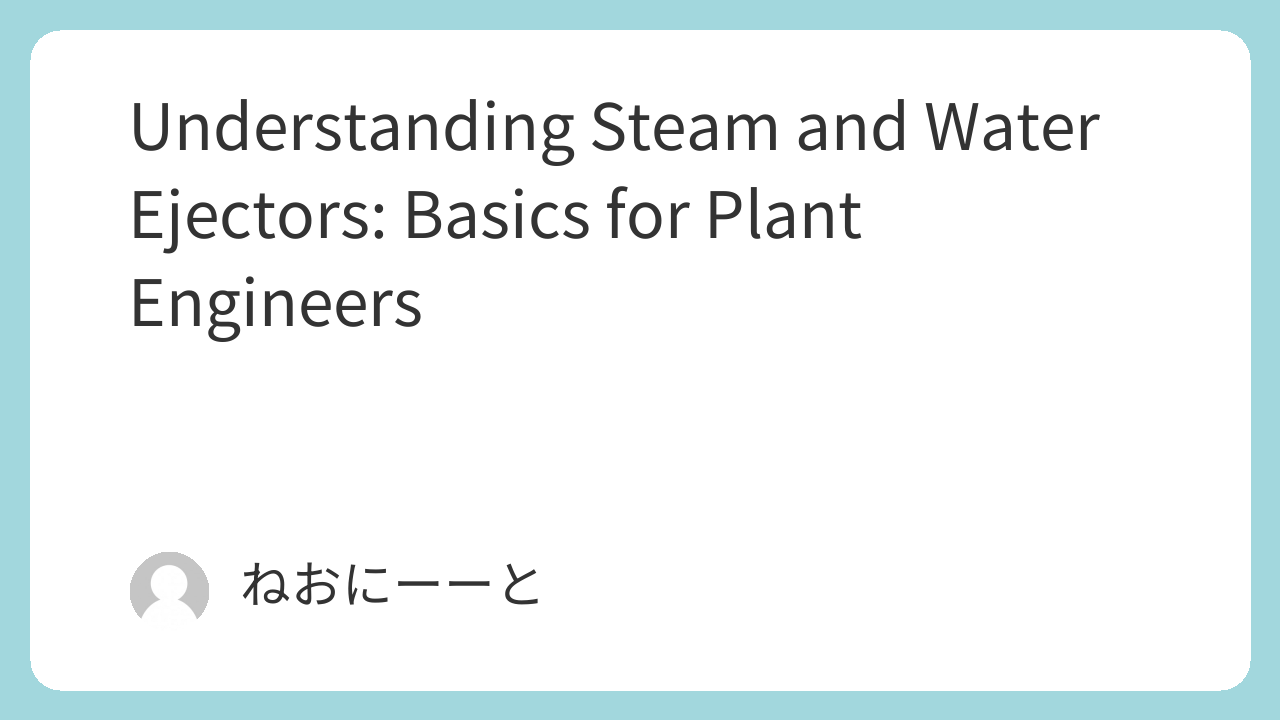In many plants and factories, ejectors play a vital role in creating vacuum and moving gases. Unlike pumps, they rely on steam or water as a driving fluid to draw in and discharge air or other gases. Their simple design, reliability, and ability to work in explosive or corrosive environments make them an essential piece of equipment in chemical plants and power facilities.
This article explains how steam and water ejectors work, their principles, features, and practical considerations for engineers. By understanding ejectors, you can prevent equipment troubles and improve process efficiency.
How Ejectors Work
An ejector uses a driving fluid (steam, water, or air) to create suction and transport gas.
- Driving fluid (P0): high-pressure source such as steam or water
- Gas inlet (P1): pressure higher than the outlet
- Gas outlet (P2): lowest pressure
The relationship is always: P0 > P1 > P2.
The nozzle accelerates the driving fluid, creating a low-pressure zone that draws in the process gas. The fluids mix, then discharge through a diffuser where velocity decreases and pressure recovers.
Key Features of Ejectors
- No moving parts → long service life, low failure risk
- Corrosion-resistant materials like carbon can be used
- Compact size → suitable for space-limited plants
- Safe in explosive areas (no motors required)
Steam Ejectors
Steam ejectors are the most common type:
- Wide pressure range: boiler steam allows flexible operation
- Condensable: steam can be condensed to reduce volume load
- Multi-stage possible: with condensers between stages to maintain performance
- Drawbacks: higher operating cost (steam consumption) and carbon-neutral concerns
They are often used where strong vacuum performance is needed.
Water Ejectors
Water ejectors use liquid as the driving medium:
- Lower capacity than steam ejectors
- Cannot be multi-staged easily (water accumulation causes performance loss)
- Lower cost than steam
- Common in scrubber systems and corrosive gas applications
While cheaper, they require water management and sometimes wastewater treatment.
Air Ejectors
Air ejectors use compressed air as the motive fluid:
- Less common as stand-alone units
- Not condensable or separable like steam or water
- Often used upstream of liquid ring vacuum pumps
- Simple but limited in capacity
Practical Notes for Engineers
- Steam ejectors are flexible but costly
- Water ejectors are inexpensive but weaker
- Air ejectors are supporting devices, not primary units
- Ejector selection depends on process gas type, required vacuum, operating cost, and safety requirements
Conclusion
Steam and water ejectors remain indispensable in many process industries. Their ability to create vacuum without moving parts makes them reliable and safe. When selecting an ejector, balance performance, operating cost, and plant conditions. With proper understanding and routine checks, ejectors can keep your plant running smoothly and trouble-free.

Comments